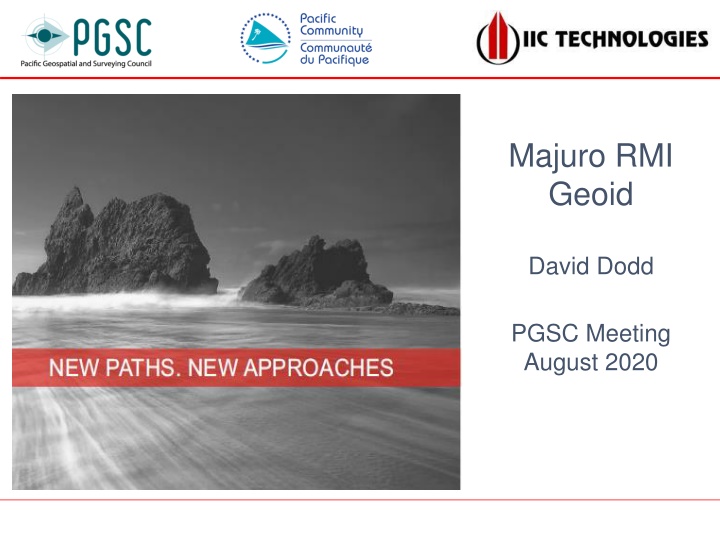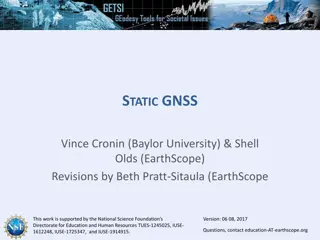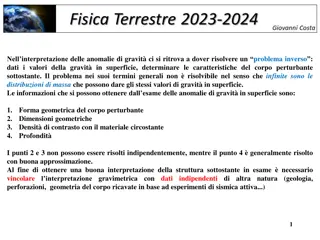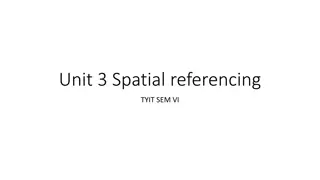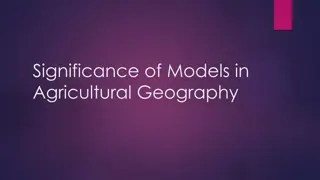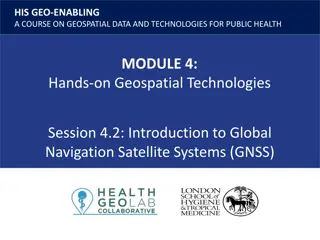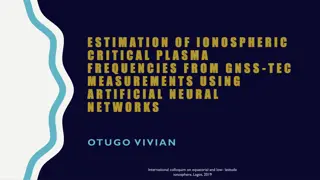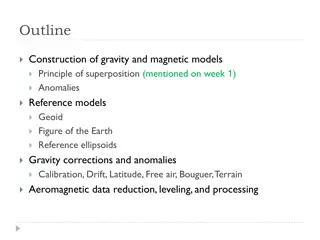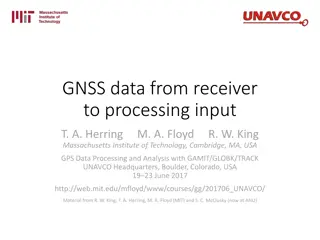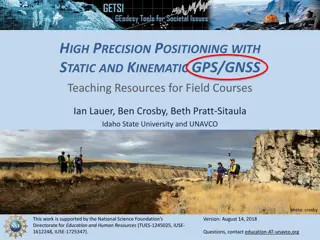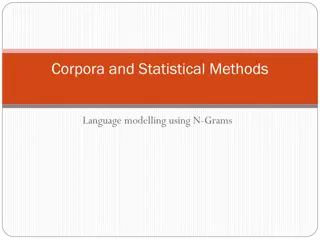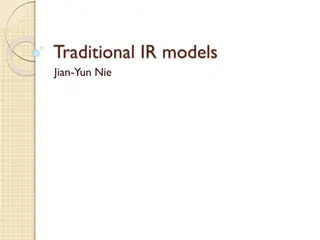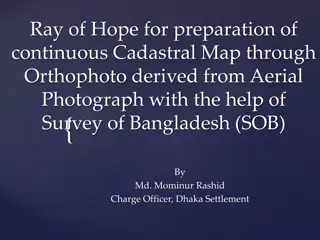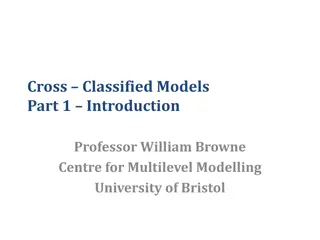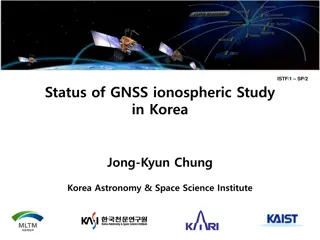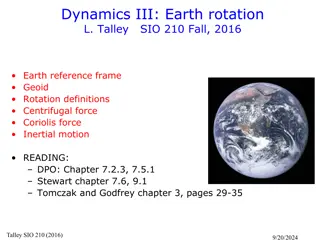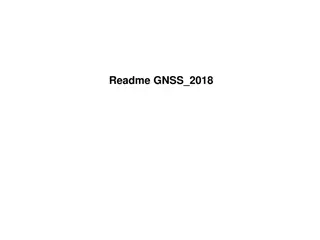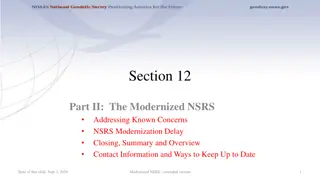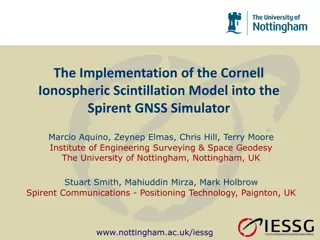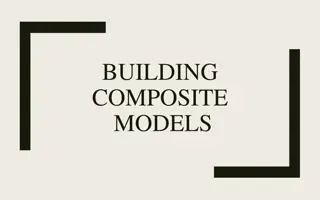The Importance of Geoid Models Using GNSS Technology
Explore the significance of geoid models in surveying to determine orthometric heights, monitor sea level changes, and establish stable datum reference frames. The challenges, solutions, and recommendations for geoid development are discussed in the context of Majuro, RMI. Various aspects like geoid derivation, geoid undulation, and survey methodologies using GNSS technology are covered, emphasizing the need for new approaches in geoid modeling.
Download Presentation

Please find below an Image/Link to download the presentation.
The content on the website is provided AS IS for your information and personal use only. It may not be sold, licensed, or shared on other websites without obtaining consent from the author.If you encounter any issues during the download, it is possible that the publisher has removed the file from their server.
You are allowed to download the files provided on this website for personal or commercial use, subject to the condition that they are used lawfully. All files are the property of their respective owners.
The content on the website is provided AS IS for your information and personal use only. It may not be sold, licensed, or shared on other websites without obtaining consent from the author.
E N D
Presentation Transcript
Majuro RMI Geoid David Dodd PGSC Meeting August 2020
Welcome Importance of a Geoid Model Use GNSS for mapping, easily recover datum, monitor sea level change (1 slide) Majuro Geoid Geoid (N), Geoid Derivation, Majuro Datum Schematic (4 slides) Geoid Development Challenges Surveys for N, GNSS Issues, Solution, Comparison (6 slides) Recommendations Geoid Development Strategy NEW PATHS, NEW APPROACHES
Importance of a Geoid Model Use GNSS surveying to determine orthometric heights Levelling and/or total station work requires expertise, is time consuming and expensive. Provide stable datum reference frame BMs move with the land due to tectonic activity Ellipsoid reference will remain constant Can measure the movement of the terrain over time and after a tectonic event Can measure the change in sea level, regardless of what is happening with the land NEW PATHS, NEW APPROACHES
Majuro LiDAR Geoid MAJU TG NEW PATHS, NEW APPROACHES
Geoid Undulation N NEW PATHS, NEW APPROACHES
Geoid Derivation Geoid model based on EGM08 1 GRID Majuro Geodetic Vertical Datum (MGVD17) = MSL (1993 to 2017) at TG 1.102m above TGZ Ellipsoid reference ITRF 2014 epoch 2016 EGM 08 undulation adjusted to match observed N at TG holding BM MAR13 = 28.815m EGM 08 adjustment to Geodetic Datum +0.878m at TG Majuro Geoid = EGM08 + 0.878m MGeoid_ITRF14ep2016_MGVD17 NEW PATHS, NEW APPROACHES
Majuro Datum Schematic NEW PATHS, NEW APPROACHES
Challenges Determining the local geoid undulation N. Need to observe GNSS derived ellipsoid heights AND orthometric heights Expense and time need for leveling orthometric heights NEW PATHS, NEW APPROACHES
Majuro Surveys GNSS heights of control derived from static surveys with MAJU as reference base Orthometric heights of control points derived from total station trigonometric leveling using the TG BMs for datum reference Multiple GNSS and RTK surveys were conducted over 5 years (2014 through 2018) All GNSS surveys used the same CORS base station: MAJU All GNSS surveys used the same 3D datum reference: IGS08 NEW PATHS, NEW APPROACHES
Issues GNSS surveys used different control coordinates for MAJU: 2016 differed vertically by ~1m. This and other inconsistencies in the GNSS and orthometric heights for control points led to low confidence in the derived N values. These inconsistencies directly influence the original geoid model NEW PATHS, NEW APPROACHES
Solution EGM08, vertically shifted to match the geodetic datum at the TG, produced the most consistent results. NEW PATHS, NEW APPROACHES
MGeoid Compared to 2014/2015 Mean offset = -2.6cm St Dev = 4.6cm NEW PATHS, NEW APPROACHES
Summary and Recommendations Geoid provides stable vertical datum reference that can be used to monitor sea level change and land movement Does not require extensive control network Allows for GNSS surveying to derive orthometric height Follow similar geoid development strategy in all regions EGM08 as the base Adjusted to the local MSL datum Which provides for a simple, inexpensive and consistent geoid development process for all island nations NEW PATHS, NEW APPROACHES
Thank You! Questions? NEW PATHS, NEW APPROACHES
